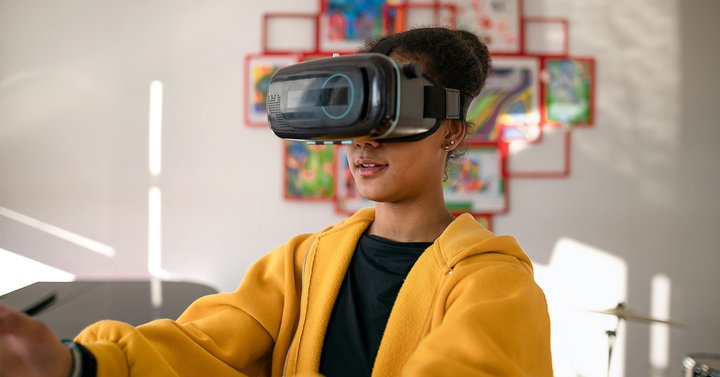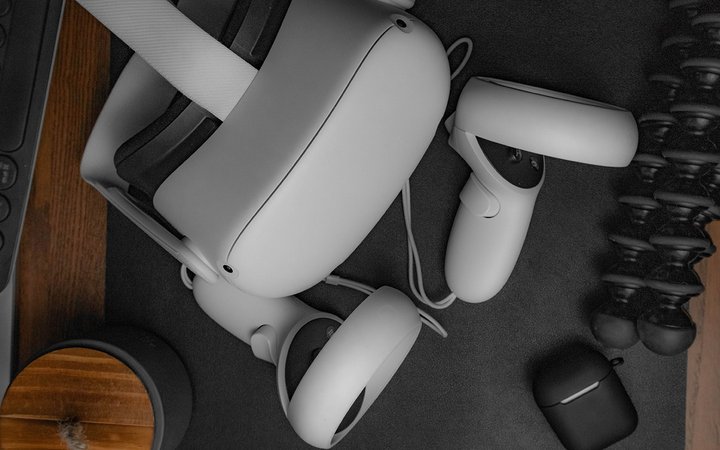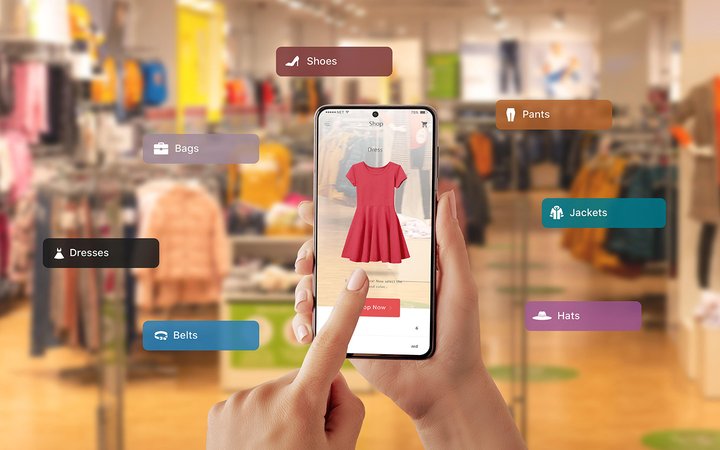How Your Shopify Store Can Thrive in the Metaverse

The metaverse is something you could only find in sci-fi movies until now. Blockbuster hits like Ready Player One (2018) helped popularize the idea before Facebook took the world by surprise with its new name: Meta. This was the start of an arms race between tech giants seeking to create a virtual world for us to play, socialize and work in.
While it’s true that there is currently nothing that could match Spielberg’s vision, investors are confident that the metaverse will be “the next big thing.”
Not sure what the metaverse is? Just imagine a virtual reality (VR) universe you access with a VR headset. It’s a new world you can enter, interact with and share with others.
While the idea may have started in the entertainment industry, future predictions tell us it can build brands and drive sales. The best time to think about how the metaverse can transform ecommerce is right now, and there are already steps you can take to prepare your business.
What is the metaverse?

The metaverse is neither one universe, one technology, nor one business. It’s a common name for any shared virtual space.
Metaverses are usually defined by these criteria:
- Virtual reality: The metaverse takes shape as a digital three-dimensional space. It is separate from the physical space you are in (which is a major difference from augmented reality).
- Immersion: Instead of using a computer or mobile device screen to display the metaverse, you access it with a VR headset. This makes you feel like you’re really inside the space. You can look around by turning your head. You may use a controller in each hand to control your arm’s movement.
- Sharing: The metaverse is not your private space, you share it with other users and you can engage with them. Though some companies offer personal lots you can purchase, they are always intended to be part of a larger shared environment.
- Interaction: The metaverse is made for interaction. You are not part of an audience or a passenger on a roller-coaster ride. You actively participate in what’s happening in the space.
- Avatars: Your representation in the metaverse is usually called an avatar. By design, the avatar is supposed to look like you—but who said you can’t have a little fun, too?
It’s easy to see the possibilities for retail business.
Customers will put on a VR headset and walk around a virtual a boutique, showroom, or an artisan’s workshop where they’ll see how products are crafted.
The metaverse gives businesses an opportunity to create a fully branded environment with no boundaries. Use it to tell your brand’s story.
People can also interact with the products without needing to visit a brick-and-mortar store; for example, clothing brands Lee and Wrangler opened their first virtual store in 2021.
These worlds let you create an avatar and try new clothes, accessories, or sit in the car of your dreams. A virtual replica of your apartment—where you can repaint walls or move furniture in seconds—is possible as well.
The idea of customizing your avatar comes from online multiplayer games like Fortnite, League of Legends and even The Sims. In these games, you can pay—using either in-game currency or even real money—to wear clothes (or “skins”) of your choice. Today, you can even dress your player character in high fashion brands such as Gucci or Louis Vuitton.
How can you enter the metaverse?

To enter the metaverse, you will need a VR headset that puts displays right in front of your eyes and tracks your head movement. The simplest VR headsets use a technology you probably already have—a smartphone. You can attach the smartphone to a mount you strap to your head and the usually handheld device becomes a window into a different world!
More expensive options with high-quality displays and audio, advanced movement tracking and other features are available, for example, Meta (formerly Oculus) Quest 2 or HTC Vive Pro 2. Even Apple is launching its virtual reality headset, codenamed xrOS, in 2023. However, these dedicated VR headsets usually require a powerful computer to run smoothly.
If you want to go the most affordable route, you can purchase (or even craft) a simple smartphone holder out of cardboard to simulate the VR experience. This is probably not a good long-term solution, but it can give you an idea of what it feels to be in a virtual reality.
What advantages does the metaverse bring to ecommerce?

There are countless ways to use the metaverse for your ecommerce business. The specific use-case depends on your market and target group. Do you want to promote your brand in the metaverse, advertise physical products your customers can later purchase and have delivered, or generate revenue from the metaverse experience itself?
Consider the following options and decide which would suit your business the best.
Showcase
Showcase your products or work by creating a virtual tour. The metaverse may become the new medium for the delivery of advertising and sponsored content. The fashion house Gucci held its 100th anniversary event in Roblox, to name an example.
Cater to community
You don’t have to think about sales only. The metaverse may be even more useful for building a community around your brand. Organize virtual events and promotions, let your customers meet, and as a result, increase their engagement with your brand.
Try before (physical) buy
Give your customers the opportunity to dress or accessorize their avatar with the products you’re offering. This may work well for clothes or shoes—but maybe even better for glasses or jewellery. Let them explore decorations, furniture or anything else that would usually require your customers to travel to one of your stores.
Virtual purchase
Companies developing their versions of the metaverse (like Roblox and Epic Games) don’t just plan how they’ll entertain the metaverse users, but how to make them spend money in the metaverse. Think about fully digital assets or experiences you could offer in these worlds—from clothing (avatar skins) to spaces or anything related to your brand.
Think of the metaverse as a new advertising medium or a new ecommerce platform. Right now, it can be whatever you decide.
How to prepare for the metaverse?

We are yet to see how the metaverse will look like when it goes public on a large scale, and what sort of technologies it will use. Nobody is saying you should start building your own metaverse space, just find an existing platform and use what’s on offer instead.
First, the transition to metaverse should depend on who your audience is: if your ecommerce business is B2C and targeted primarily at a younger audience, these will be more likely to take advantage of virtual reality than more mature customers or B2B. While some products and services can be extended to the metaverse naturally, for others, the market just isn’t there. For example, you can never transfer smells, tastes, or feel with a VR headset.
A good introductory step may be to introduce 360° view for your product listings or think about presenting the product in new ways (3D visualizer, configurator, augmented reality)—there’s already evidence that augmented reality product listings attract more customers than regular pictures.
Another step may be to use the virtual reality to build your brand—using 360° videos or virtual tours for storytelling and brand presentation.
Last but not least, digital retail is often connected with NFTs and new crypto or digital currencies, so it’s best to prepare payment options that support them.
Conclusion
Some see big potential in the metaverse as a platform to have fun, to connect with others and to spend money. The value of metaverse market size could hit $800 billion in global revenues by 2024.
Others are more skeptic—the VR headset is just way less practical than the smartphone you already own and can access the internet with in any position everywhere—on the bus, on the couch, while lying in bed.
Like many innovations in the past, the metaverse’s success depends on whether the big tech companies adapt it and develop affordable and appealing devices to enter the digital universe. Still, the metaverse is definitely something to consider—especially for businesses aimed at a younger audience.
Professional invoices for Shopify stores
Let Sufio automatically create and send beautiful invoices for every order in your store.
Install Sufio - Automatic Invoices from the Shopify App Store